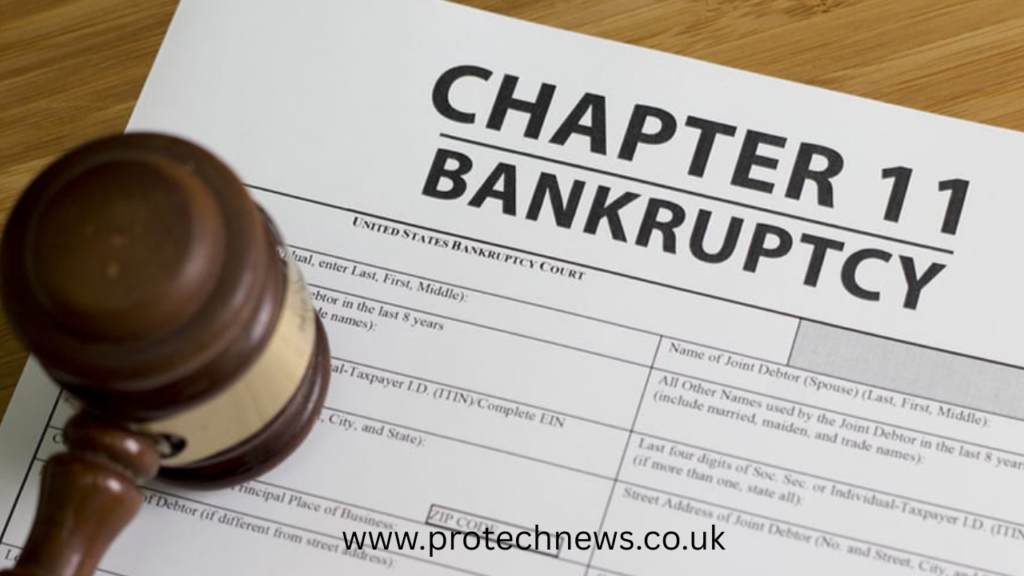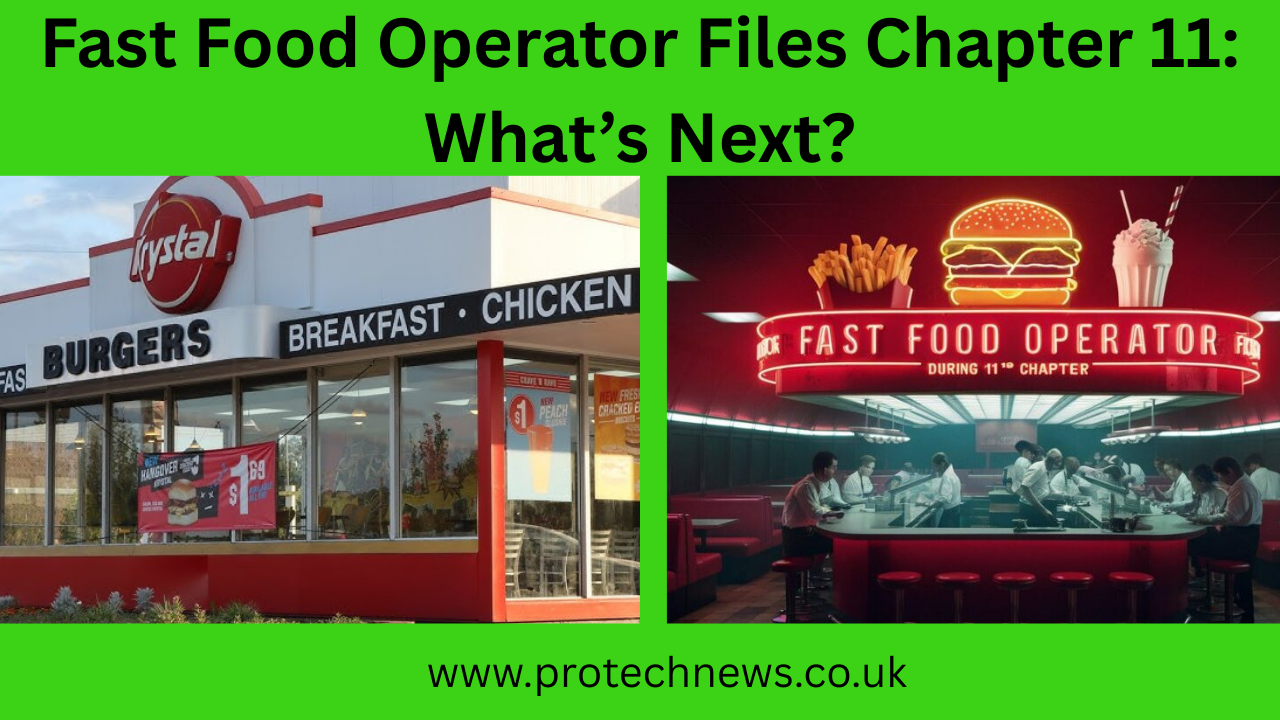Short Summary
Several fast food operators, including BurgerFi and Arby’s franchisees, have filed for Chapter 11 bankruptcy due to rising costs and changing consumer habits. This article explores the causes, impact, recovery strategies, and industry lessons from these filings, helping businesses and consumers understand what’s next in the evolving fast-food landscape.
Introduction
In a surprising twist for the quick-service industry, several major fast food operators have filed for Chapter 11 bankruptcy in recent years. This move has sparked concern, speculation, and strategy reassessment within the food and beverage sector. The “fast food operator Chapter 11“ trend highlights broader challenges—from inflation to changing consumer behaviors—that are reshaping the industry’s future.
What Is Chapter 11, and Why Is It Used?

Chapter 11 is a legal process under U.S. bankruptcy law that allows companies to restructure their debts while continuing daily operations. Unlike Chapter 7, which requires liquidation, Chapter 11 provides breathing room for companies to renegotiate obligations, downsize operations, or find new investment opportunities.
For a fast food operator, Chapter 11 often means a second chance at life, cutting unprofitable locations, shedding leases, and revamping their business model to align with modern consumer trends.
Case Spotlight: BurgerFi Files for Chapter 11
One of the most high-profile recent examples is BurgerFi International, a Florida-based chain that owns Anthony’s Coal Fired Pizza & Wings. The company filed for Chapter 11 in September 2024, citing at least $50 million in assets and $100 million in liabilities.
Their losses—$18.4 million in a single quarter—were attributed to:
- Increased labor costs
- High prices for essential ingredients (especially chicken wings)
- Slower consumer spending in a post-pandemic economy
While BurgerFi continues to operate, it is now under strict financial supervision with hopes of reorganization.
Other Notable Fast Food Chapter 11 Filings

1. Meatheads Burgers & Fries
This Illinois-based chain filed for Chapter 11 in 2021. COVID-19 closures and dwindling foot traffic crushed profits. Despite once having a loyal customer base, the chain couldn’t recover without significant changes.
2. Miracle Restaurant Group (Arby’s Franchisee)
In June 2024, this group operating 25 Arby’s locations filed for Chapter 11. It marked its second bankruptcy filing in just four years. Inflation and declining traffic were the main culprits.
Why Are Fast Food Operators Going Bankrupt?
1. Inflation and Labor Costs
Wages have risen across the board, especially in the service industries. Food prices, too, have skyrocketed. This perfect storm has drastically narrowed profit margins.
2. Changing Consumer Preferences
Health-conscious and sustainability-focused diners are moving away from traditional fast food. Chains that fail to adapt quickly are suffering.
3. Lease Obligations
Many fast food operators are locked into long-term lease agreements for locations without generating revenue. Chapter 11 allows renegotiation or rejection of these leases.
4. Franchise Management Complexity
Large franchise networks are more complex to control. Operational inconsistency and local mismanagement often harm the overall brand.
How Chapter 11 Affects Customers and Employees
While operations typically continue during a Chapter 11 process, effects can still be felt:
- Menu Cuts: Operators might trim down menu offerings to simplify inventory and reduce costs.
- Fewer Locations: Underperforming outlets are usually closed.
- Job Losses: Although companies attempt to preserve jobs, closures and restructuring can lead to layoffs.
- Customer Confidence: News of bankruptcy can damage a brand’s reputation—even if food quality remains unchanged.
Restructuring Strategies: A Path Toward Recovery
To successfully exit Chapter 11, a fast food operator must adopt innovative, sustainable strategies:
● Menu Modernization
Healthier, plant-based, and locally sourced items are in demand. Operators who innovate can regain consumer interest.
● Digital Transformation
Online ordering, app-based loyalty programs, and delivery partnerships (like DoorDash or Uber Eats) are now essential, not optional.
● Location Optimization
Focusing on high-traffic, profitable sites while closing poor performers allows for better resource allocation.
● Sustainability Focus
Eco-friendly packaging, reduced food waste, and ethical sourcing appeal to today’s conscious consumers.
Investor and Stakeholder Impact
Filing for Chapter 11 doesn’t just affect operations—it impacts stakeholders:
- Shareholders: May face significant equity dilution.
- Vendors: Payments may be delayed or reduced.
- Lenders: Often need to renegotiate terms or write off a portion of debt.
In BurgerFi’s case, even Martha Stewart, a known shareholder, was indirectly impacted as the company sought protection from creditors.
What the Industry Can Learn
The fast food operator Chapter 11 wave is a cautionary tale for the entire quick-service sector. It emphasizes:
- The danger of stagnation in a rapidly evolving food landscape
- The importance of agile business models
- The necessity for operational and digital innovation
Even industry giants aren’t immune to financial failure if they fail to adapt.
Looking Ahead: Is Recovery Possible?
Yes, and history proves it. Several brands have rebounded from Chapter 11:
- Quiznos restructured and slimmed down operations to remain active.
- Sbarro reinvented itself after multiple filings by focusing on non-traditional venues like airports and malls.
Recovery depends on leadership, innovation, and honest introspection. Chapter 11 isn’t the end; it’s a new beginning.
Final Thoughts
The fast food operator Chapter 11 trend underlines that no brand is too big or fast to fall behind. Financial turbulence in the industry points to the need for more resilient, tech-savvy, and customer-focused models. Operators willing to learn and evolve from their bankruptcy journey can pave the way for a brighter, tastier future.
FAQs
1. What does Chapter 11 mean for a fast food operator?
It allows the operator to restructure debt while continuing business operations.
2. Why are fast food chains filing for Chapter 11?
Due to rising labor/food costs, changing customer preferences, and poor-performing locations.
3. Is Chapter 11 the end of the business?
No. It’s a restructuring process, often allowing companies to recover and grow.
4. What happens to employees during Chapter 11?
Jobs may be retained, but layoffs can occur if locations are closed.
5. Can a fast-food chain bounce back after Chapter 11?
Yes. With the right strategy, many chains recover and return stronger.
Read Also: The Visionary Leadership and Strategic Impact of Pedro Vaz Paulo in Modern Business Innovation.



